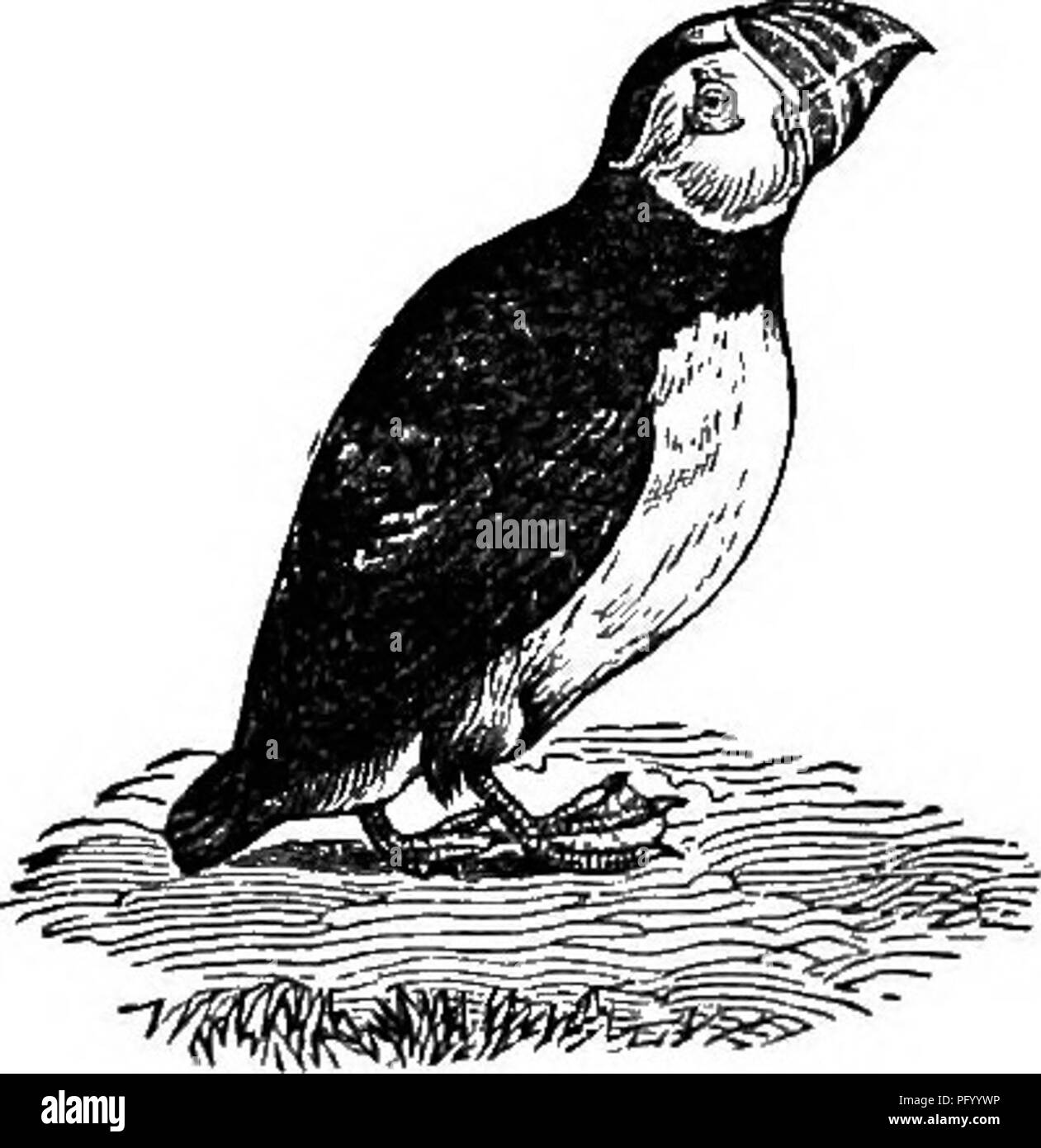. Natural history of animals. Containing brief descriptions of the animals figured on Tenney's Natural history tablets, but complete without the tablets. Zoology. 100 VERTEBRATES: REPTILES.. Fig. 166.—Puifiii. The Great Auk of the Arctic regions is as large as the Penguin. Other kinds are much smaller, and those called Puffins are not larger than a dove. Puffins make their nests in burrows in the ground, and each bird lays but one egg in a sea- son. REPTILES. Reptiles are vertebrates which have cold blood, and are covered with hard plates, called scales, and which lay eggs in holes that they d

Image details
Contributor:
Central Historic Books / Alamy Stock PhotoImage ID:
PFYYWPFile size:
7.1 MB (244.1 KB Compressed download)Releases:
Model - no | Property - noDo I need a release?Dimensions:
1557 x 1604 px | 26.4 x 27.2 cm | 10.4 x 10.7 inches | 150dpiMore information:
This image is a public domain image, which means either that copyright has expired in the image or the copyright holder has waived their copyright. Alamy charges you a fee for access to the high resolution copy of the image.
This image could have imperfections as it’s either historical or reportage.
. Natural history of animals. Containing brief descriptions of the animals figured on Tenney's Natural history tablets, but complete without the tablets. Zoology. 100 VERTEBRATES: REPTILES.. Fig. 166.—Puifiii. The Great Auk of the Arctic regions is as large as the Penguin. Other kinds are much smaller, and those called Puffins are not larger than a dove. Puffins make their nests in burrows in the ground, and each bird lays but one egg in a sea- son. REPTILES. Reptiles are vertebrates which have cold blood, and are covered with hard plates, called scales, and which lay eggs in holes that they dig in the ground; these eggs hatch without being brooded by the parent, and the young, as soon as hatched, look just like the par- ents, only smaller. Reptiles are such as Turtles or Tortoises, Lizards, and Serpents or Snakes. TURTLES. Turtles, or Tortoises, are reptiles which have a shell into which they can more or less completely withdraw their head, legs, and tail. Some of them live wholly upon the laud, like those called Gophers in the South- ern States, which dig burrows in the ground that are dangerous pitfalls for horsemen, and the Box Turtles, which live in the woods, and which can shut their shell so tightly as to entirely hide their extremities, as seen in Figure 169. Others, like the Painted Turtle, with its colors of black, yellow, and red, the "Wood Tortoise, with its beautifully carved scales, the Speckled Tortoise, . Please note that these images are extracted from scanned page images that may have been digitally enhanced for readability - coloration and appearance of these illustrations may not perfectly resemble the original work.. Tenney, Sanborn, 1827-1877; Tenney, Abby Amy (Gove) 1836-. New York, Scribner, Armstrong